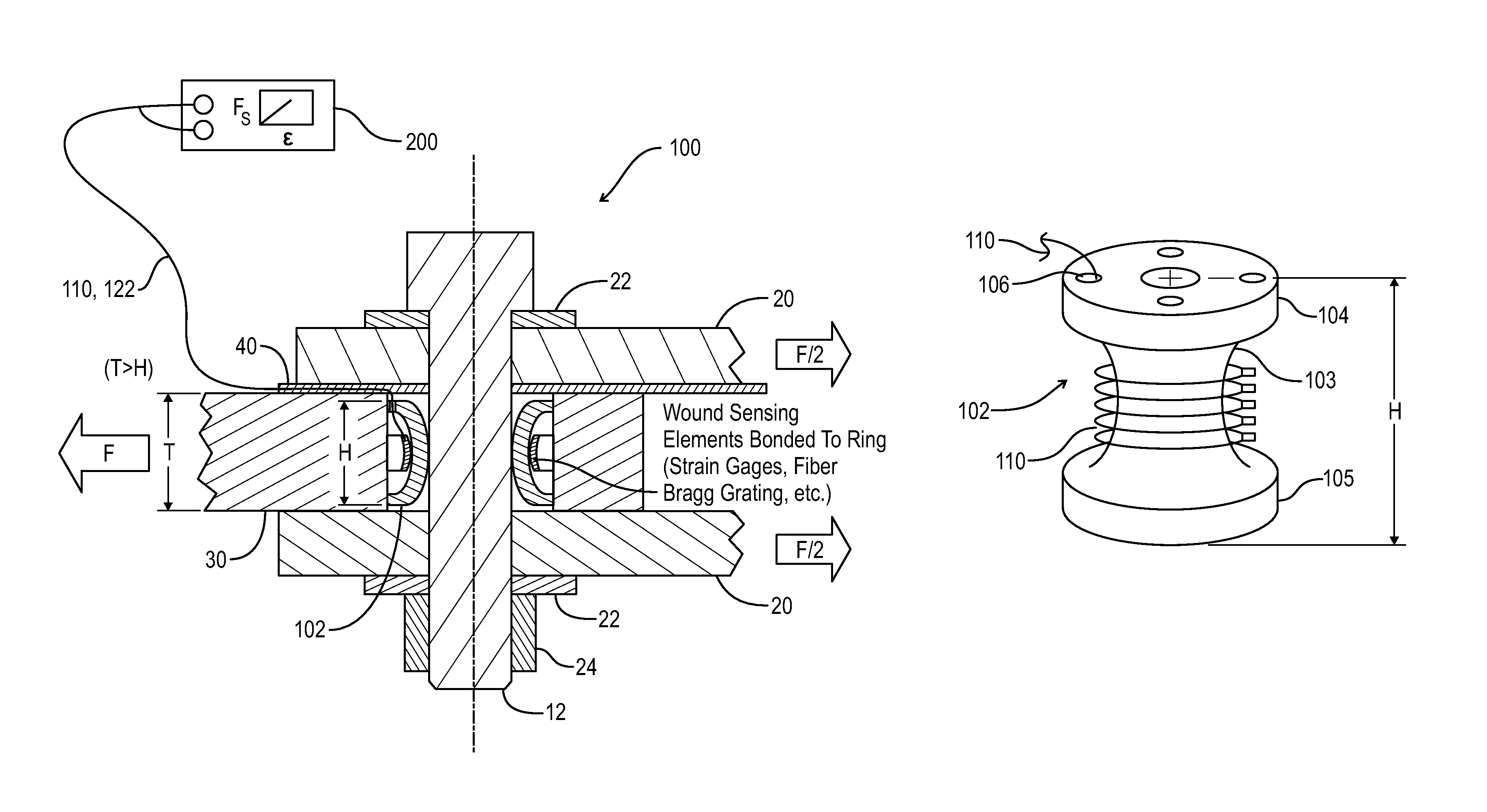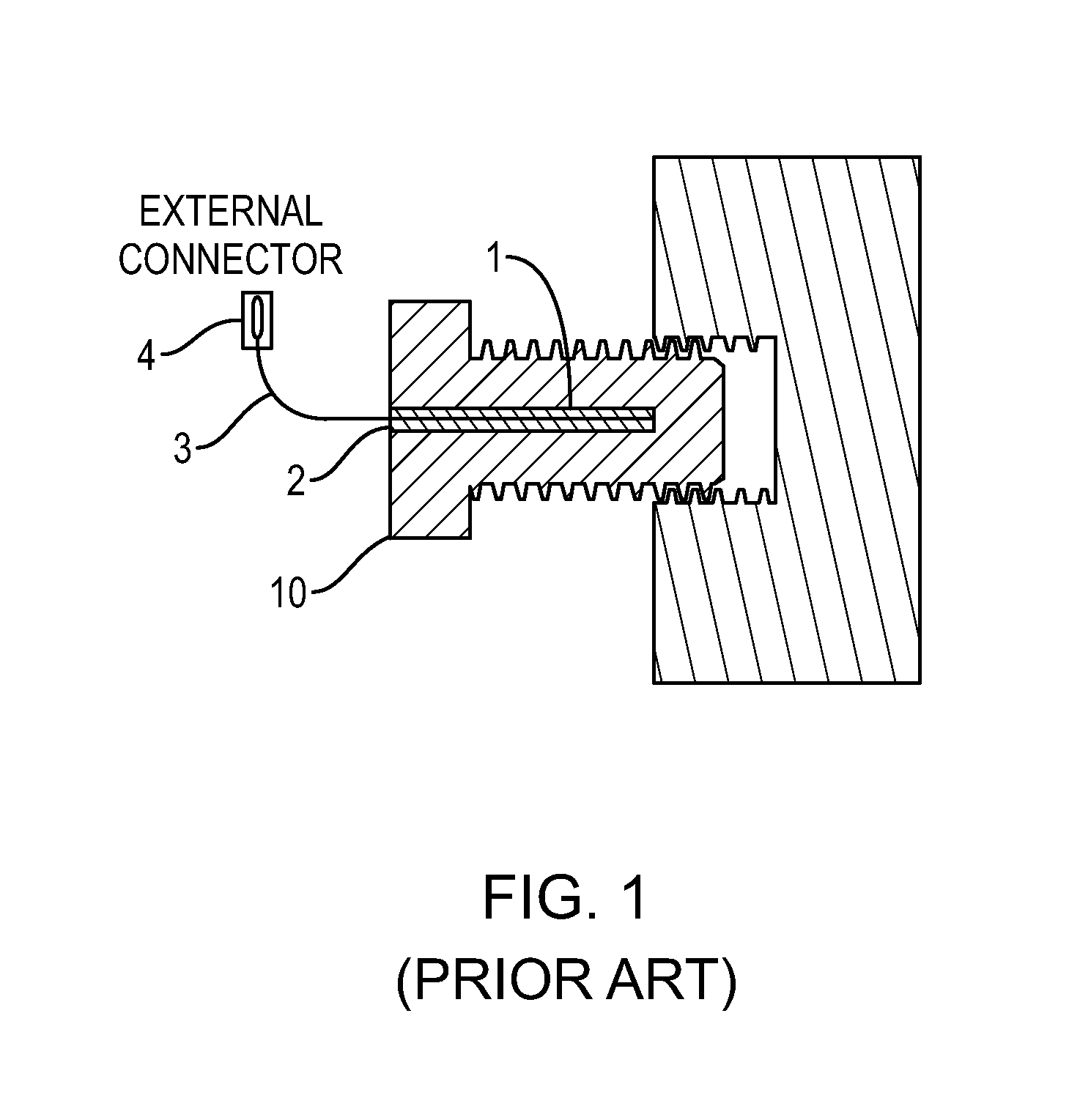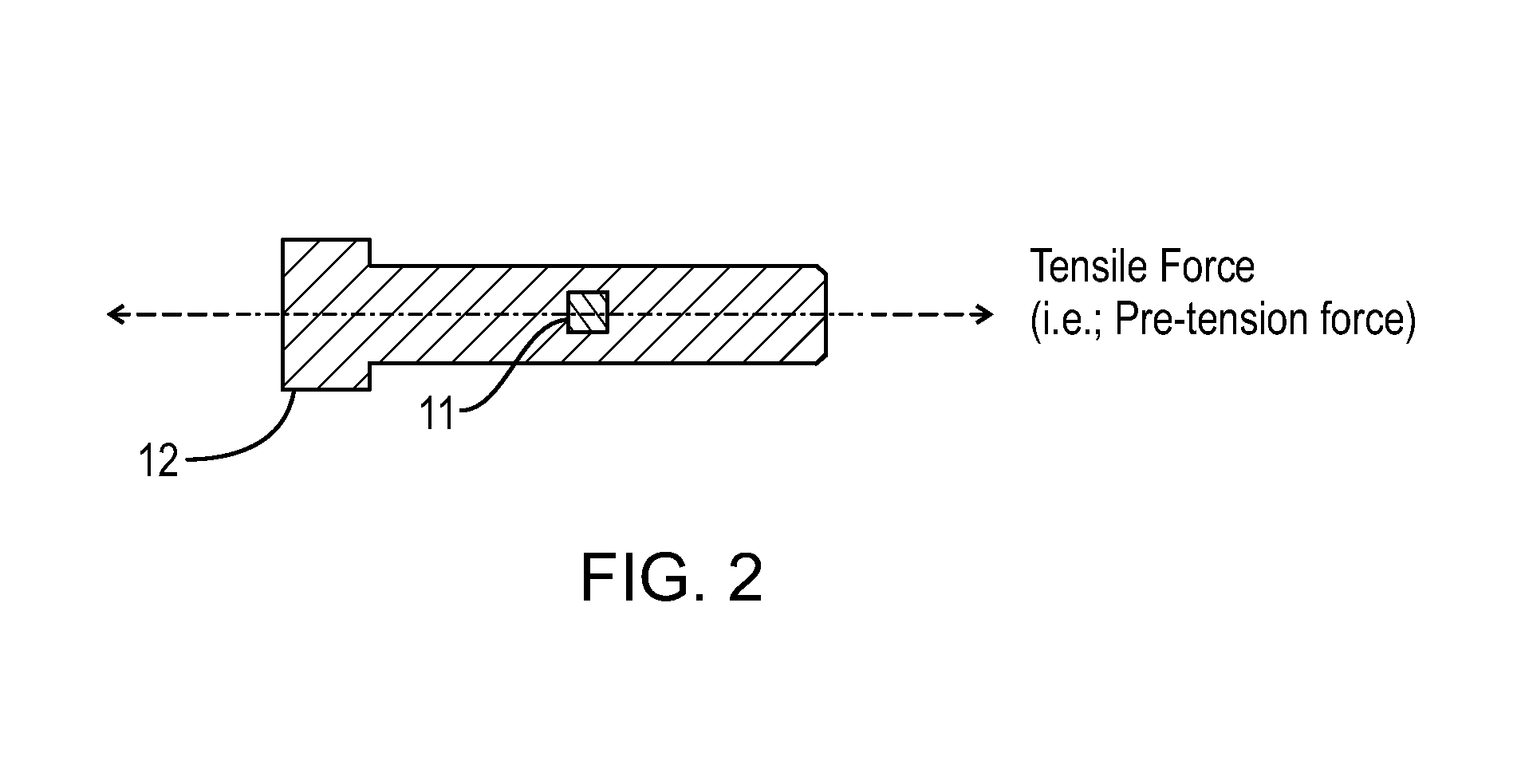Bolt shear force sensor
- Summary
- Abstract
- Description
- Claims
- Application Information
AI Technical Summary
Benefits of technology
Problems solved by technology
Method used
Image
Examples
Embodiment Construction
[0039]As depicted in FIG. 6, the present invention provides a bolt shear force sensor 100 having a nearly-rigid, yet deformable ring 102 with indented channel-like cross-sections. In the figure, a bolt 12 is positioned between plates 20 and secured with washers 22 and a nut 24. Forces acting on the bolt 12 and the deformable ring 102 are depicted by direction arrows “F” and “F / 2”.
[0040]As shown in the detail view of FIG. 7, the deformable ring 102 is a shear force sensor ring employing an optical fiber 110. The optical fiber 110 is continuously wound around and glues (fastened) to a vertical section 103 positioned between an upper flange 104 and a lower flange 105 of the ring 102. The optical fiber 110 includes Bragg gratings which are commonly used as measuring sensors.
[0041]The deformable ring 102 includes at least one egress hole or aperture 106 which provides a conduit for the optical fiber 110 to connect to a signal conditioner 200 (See FIG. 6). The deformable ring 102 may be c...
PUM
 Login to View More
Login to View More Abstract
Description
Claims
Application Information
 Login to View More
Login to View More - R&D
- Intellectual Property
- Life Sciences
- Materials
- Tech Scout
- Unparalleled Data Quality
- Higher Quality Content
- 60% Fewer Hallucinations
Browse by: Latest US Patents, China's latest patents, Technical Efficacy Thesaurus, Application Domain, Technology Topic, Popular Technical Reports.
© 2025 PatSnap. All rights reserved.Legal|Privacy policy|Modern Slavery Act Transparency Statement|Sitemap|About US| Contact US: help@patsnap.com



